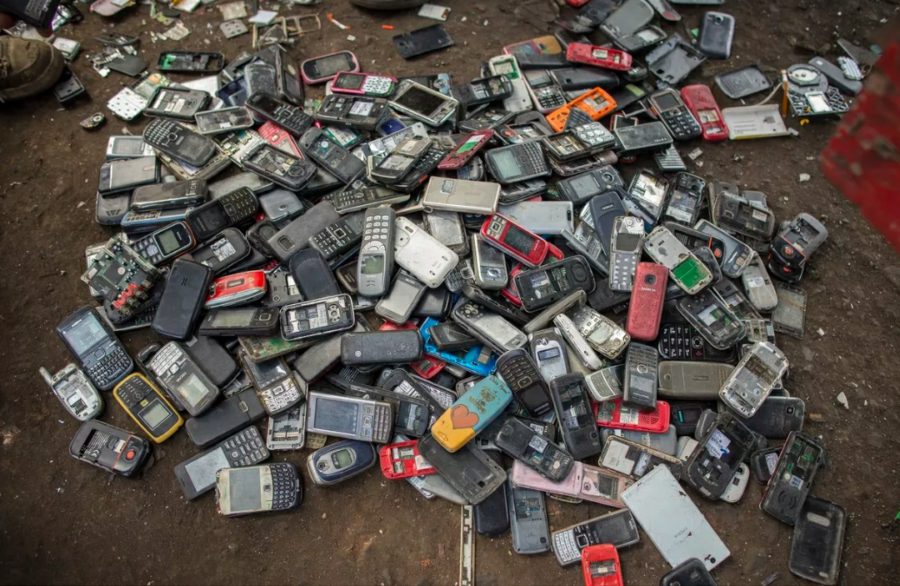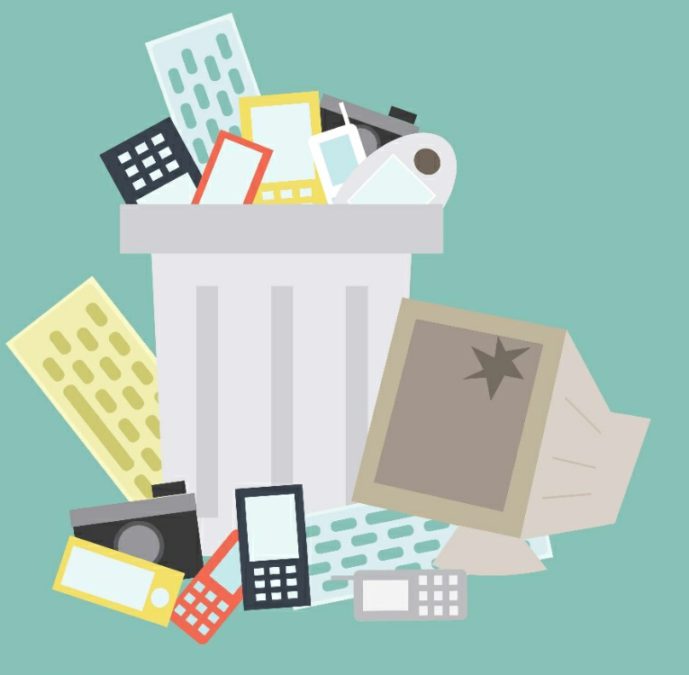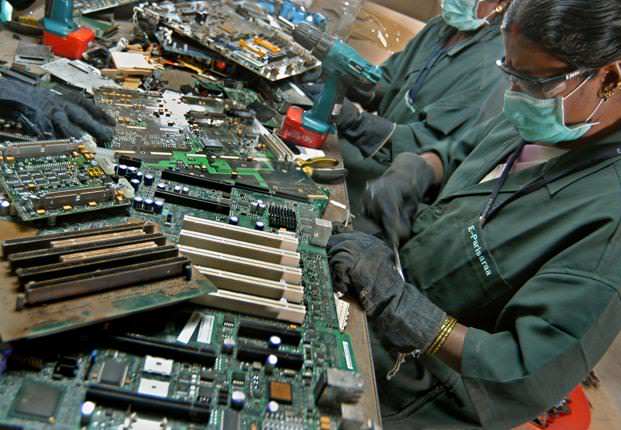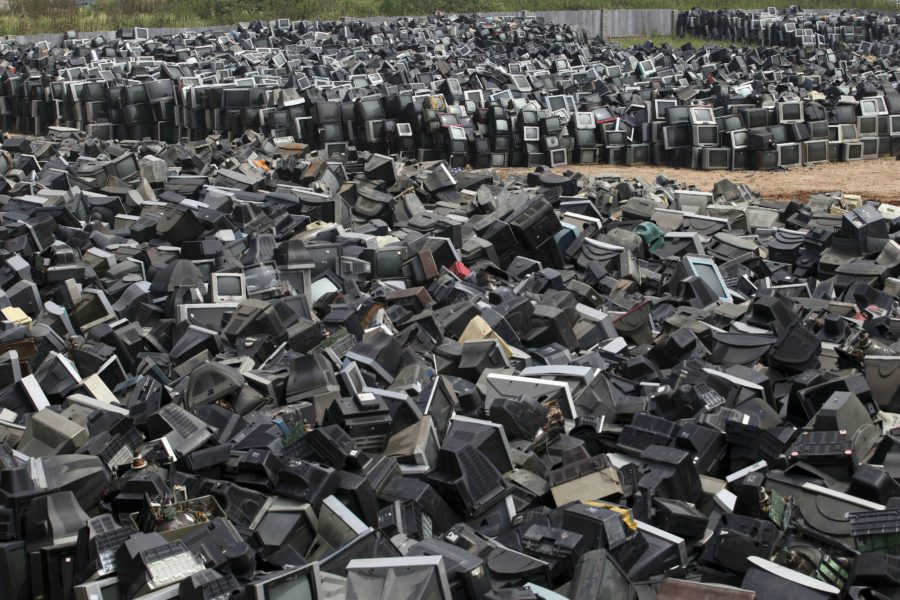Welcome to the dark world of electronic waste recycling …

Original material
In the fall, new models iPhone entered the shelves, launching an old-time ritual – the 'funeral' of smartphones. Approximately 1.5 billion phones are sold each year, which means roughly the same number of phones ditched for something more modern. We say goodbye to them quite unceremoniously, stuffing them into a drawer or a box. Sometimes we even throw them away. And this makes us embarrassed for a reason: discarded smartphones end up in landfills, polluting the soil with toxic chemicals.
To avoid this, we are trying to give our phones (broken printers, lifeless fitness trackers and broken iPad) to recycling centers. On the way from such a center, positive emotions prevail: we acted responsibly in relation to nature.

But what happens to these devices after we leave? The answer is complex and in most cases far from the concept of 'nature protection'. Welcome to the dark world of electronic waste recycling, where your smartphone will face an unpleasant fate.
The electroloma recycling myth
If a recycling company values its reputation, then its specialists will first check if the device can be sold as used for further use. If so, they will (hopefully) delete the data and either donate or sell the device on the secondary market. Gadgets not bought in the US are usually shipped to distributors in South America and Asia. Remember Motorola Razr? Long after the fading of the popularity of the device, it was 'covered' by a boom in sales in Latin America.

If the electronics 'have passed the point of no return', they are sent to processing plants, where they pass through powerful universal disintegrators. The metal components are sent to one of several partner smelters where they are melted. Some precious metals from microcircuits, including gold and palladium, are released from the melt, but most materials burn, releasing chlorine, mercury and other elements into the atmosphere.
But melting is still considered a 'good' option only because the alternative disposal methods are much worse. Virtually every honest recycling company for such waste has a corresponding organization that makes money by collecting electrical metal, packing it in containers and shipping it through a shadowy network of intermediaries to landfills in China, India, Ghana and Pakistan.

The environment pays the price of such movements, but the human cost is also high. Walk the streets of an 'electronic graveyard' such as Agbobloshi in West Africa, or a similar location in Asia or another developing country in the world, and you will see hundreds, if not thousands, of microentrepreneurs, essentially smelting metals hidden in microcircuits. From experience I can say that there is a sickening smell in the air that stays in the nose and throat for a long time.
In the process of obtaining the coveted elements, workers are faced with, among other toxic fumes, exposure to nickel, cadmium and mercury, which seeps into the surrounding air, soil and drinking water. This can lead to a “bunch” of serious, sometimes life-threatening health problems, including cancer and birth defects.
Best 'second life' for smartphones
Moving away from human and natural 'sacrifices', there is another problem in the approach to recycling electronics. When we throw away gadgets, we throw away gold in microcircuits with them. Even if the content of the latter in the phone is negligible, the total indicators are as follows: according to estimates, the amount of gold in the world volume of electromagnet is 11% of the annual production – millions of kilograms of gold in the trash.
In response to this situation, some manufacturers and sellers have begun to take steps in the right direction. Apple, Samsung, Best Buy and Amazon are encouraging users to return their old devices in exchange for cash or gift cards. For example, 'hand over old iPhone 6 and get $ 145'. Yet one of the biggest hurdles is technology. The negligible mineral content in a typical phone is not worth the huge cost of extracting it.
The development of devices with an emphasis on subsequent reuse inspires high hopes for a larger shift in approach. The zero-waste concept is at the core of the circular economy. Apple and other companies realized the need to make screens, batteries and other components easier to replace and update. 'Honest phones' with modular components are still new, but are slowly gaining ground. The higher target is smartphones that can be split into components at the push of a button, freeing up materials to re-enter the supply chain.
The tipping point, as is usually the case, is tied to the economy. Our old phones will only 'get a better life' when companies recycle or reuse components rather than create them. Meanwhile, about 50 million kilograms of toxic waste from electronic equipment is generated every year. As the new wave of iPhone (and Galaxy and Huawei) sweeps through the market, it's time to find a way to give our old phones a place to rest once and for all.
By Paul Holgate
Of course, the idea that modular smartphones will “take off” precisely from the standpoint of environmental friendliness is not perceived as something that has a rational basis. But the rest of the author's concern is understandable. The environment in developing (and not only) countries already needs to be protected, but the inexorable development of technology often leaves no chance.
In my entire digital life, to my shame, I have not thought about disposing of gadgets that have spent theirs. Basically, he sold or left to collect dust in a box. What is your approach? Do you recycle, sell, store or throw away?
